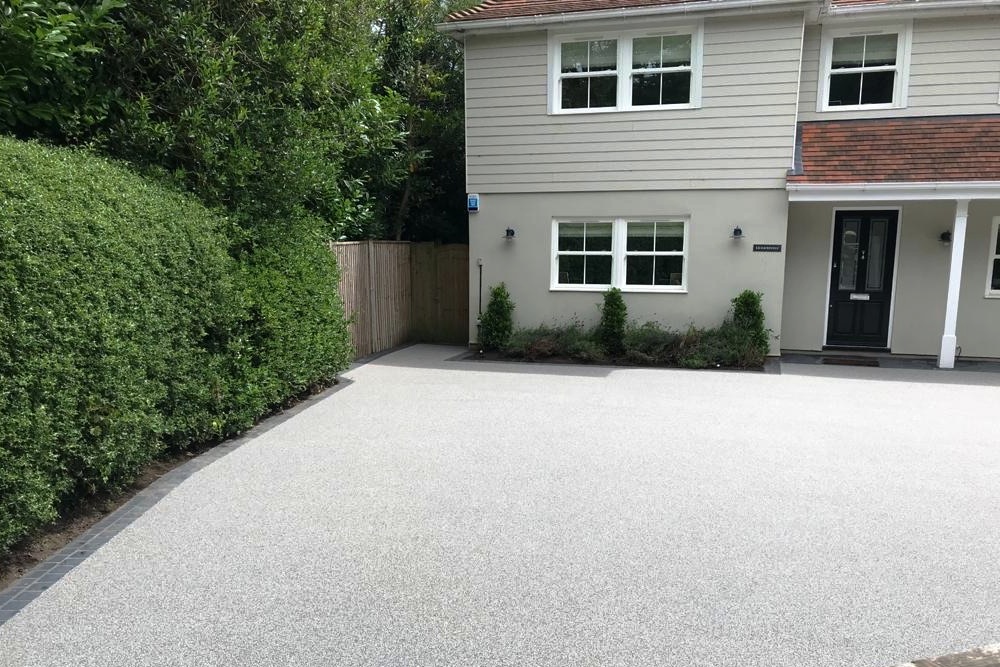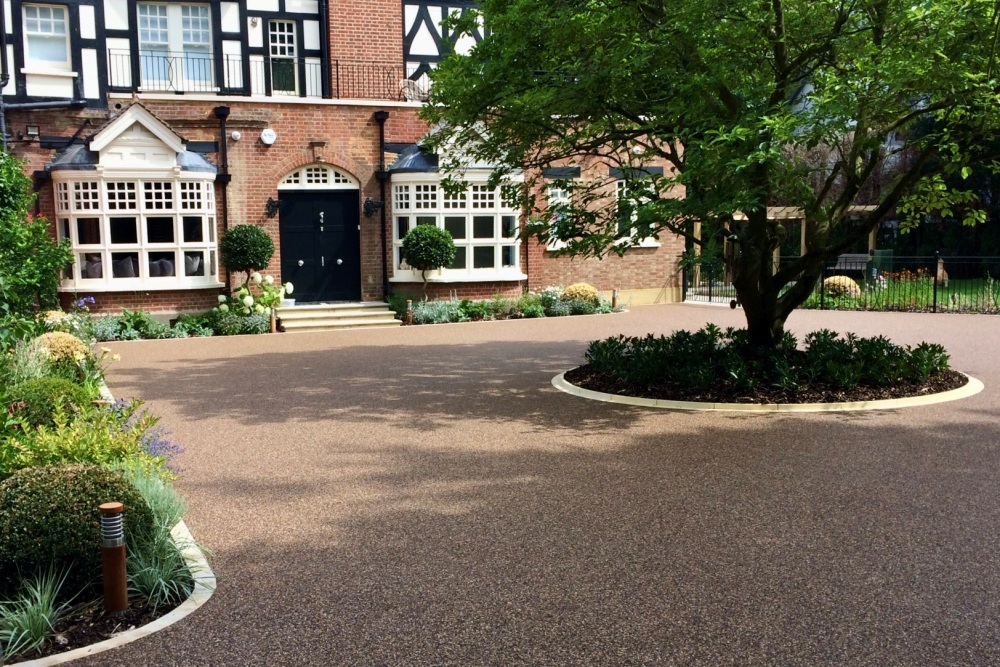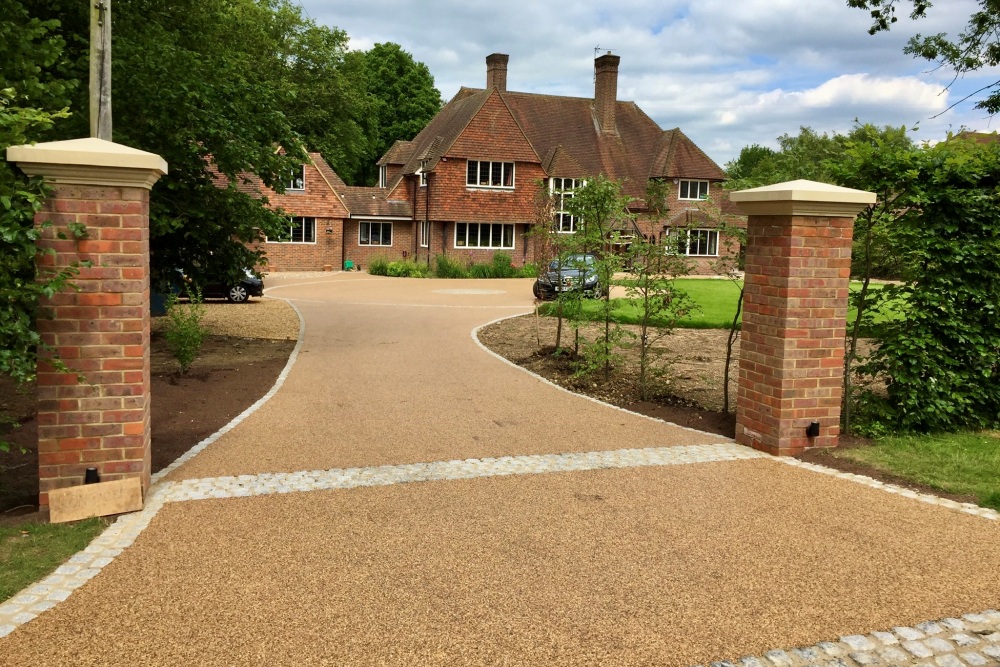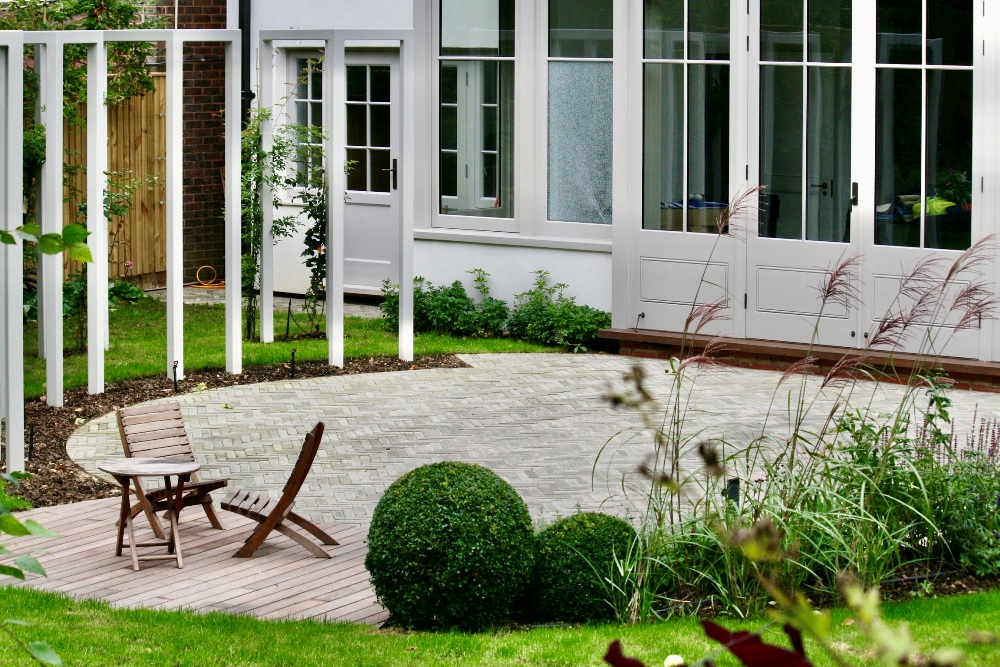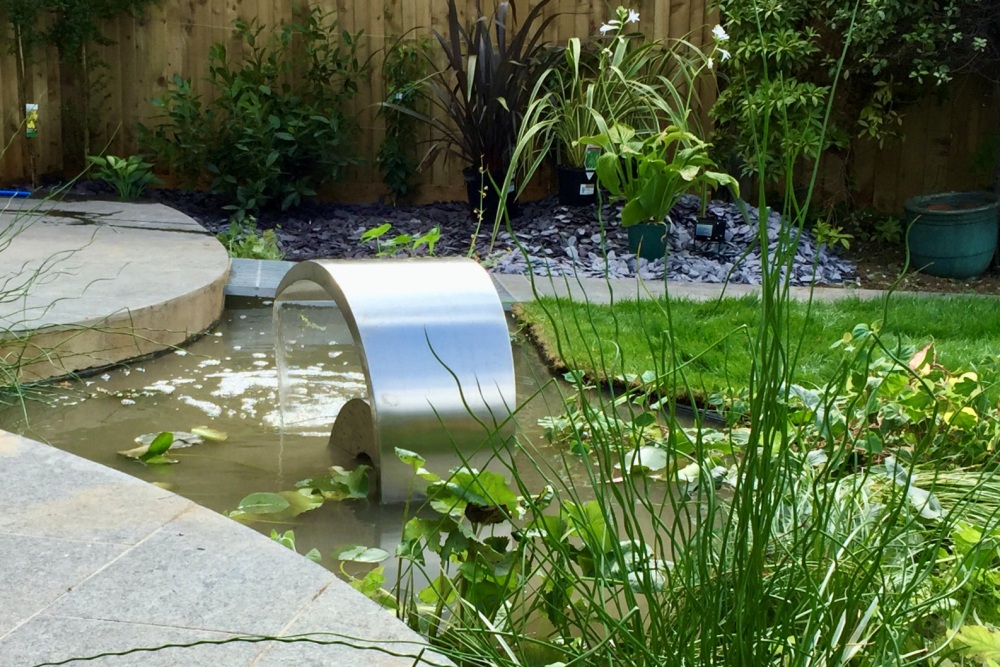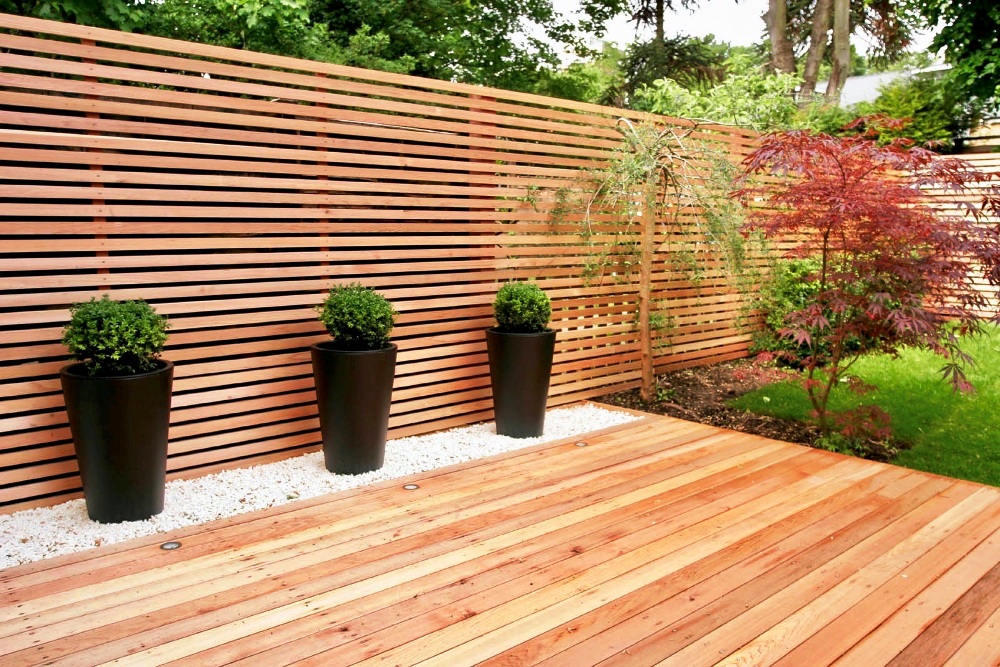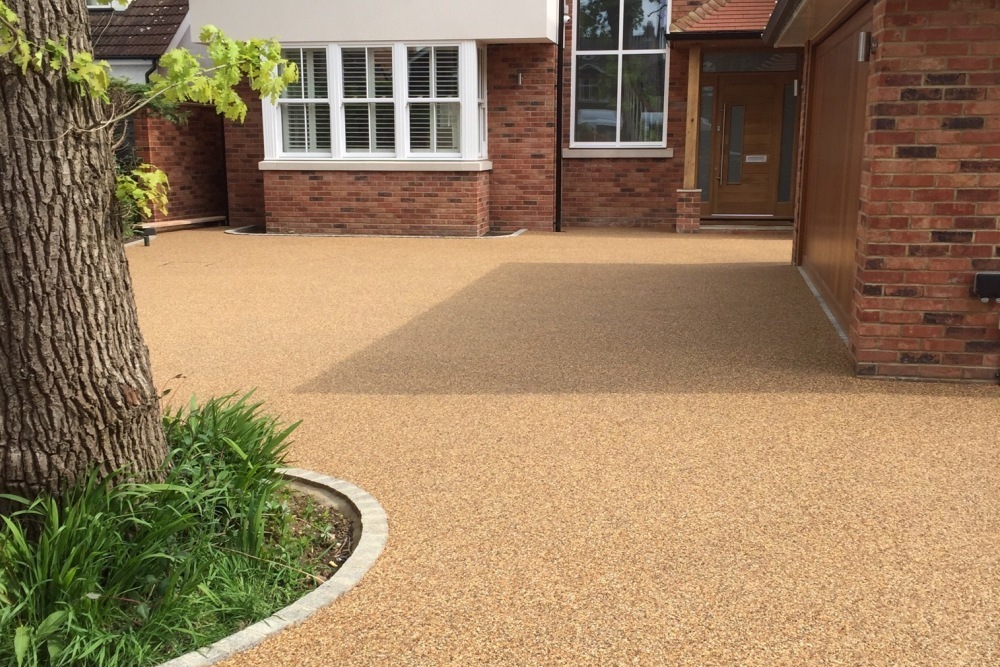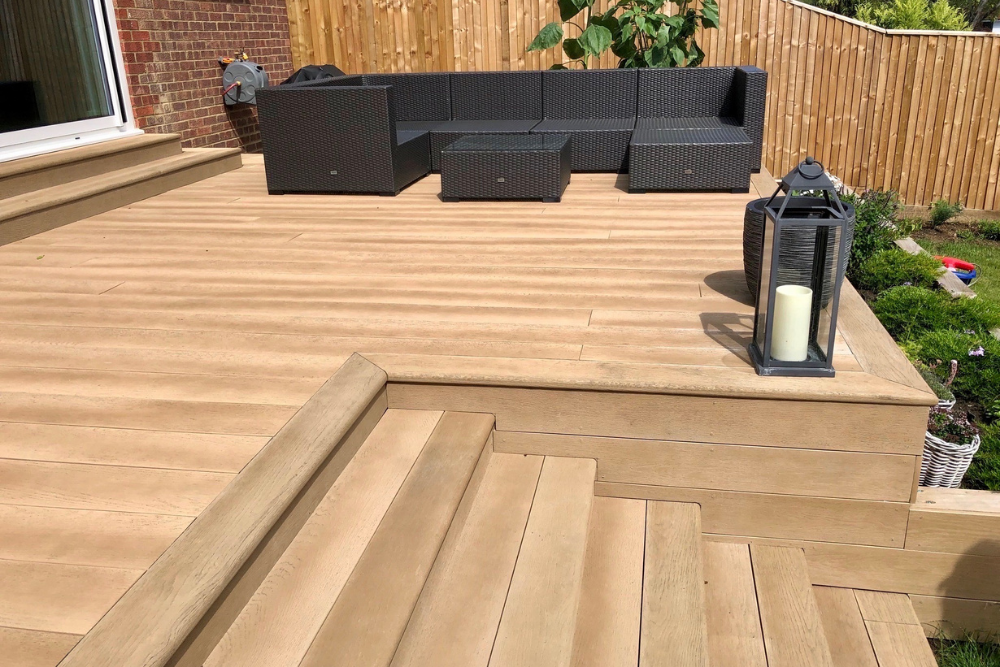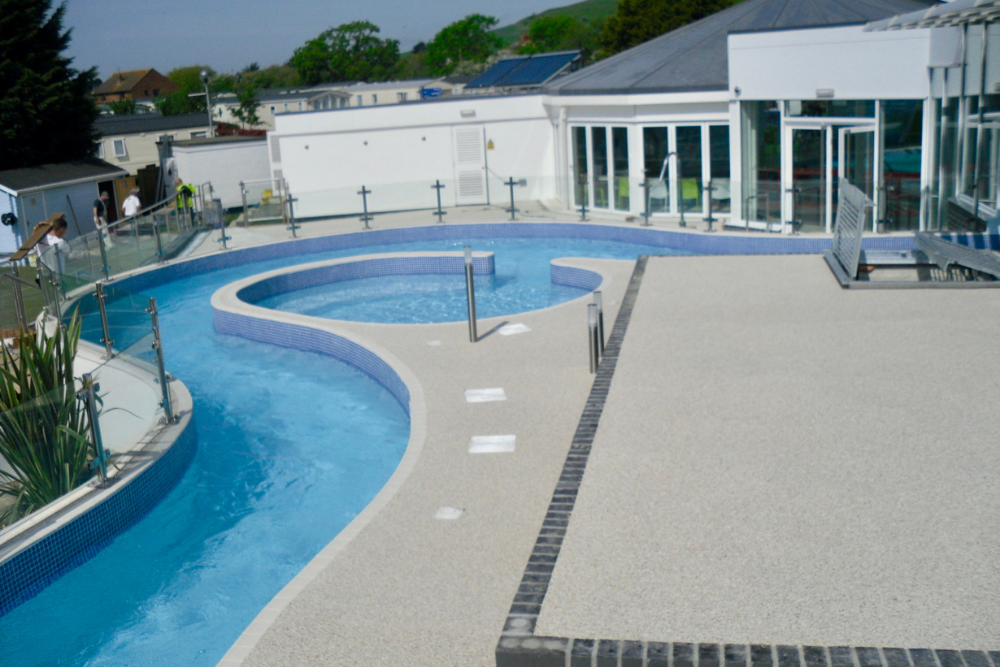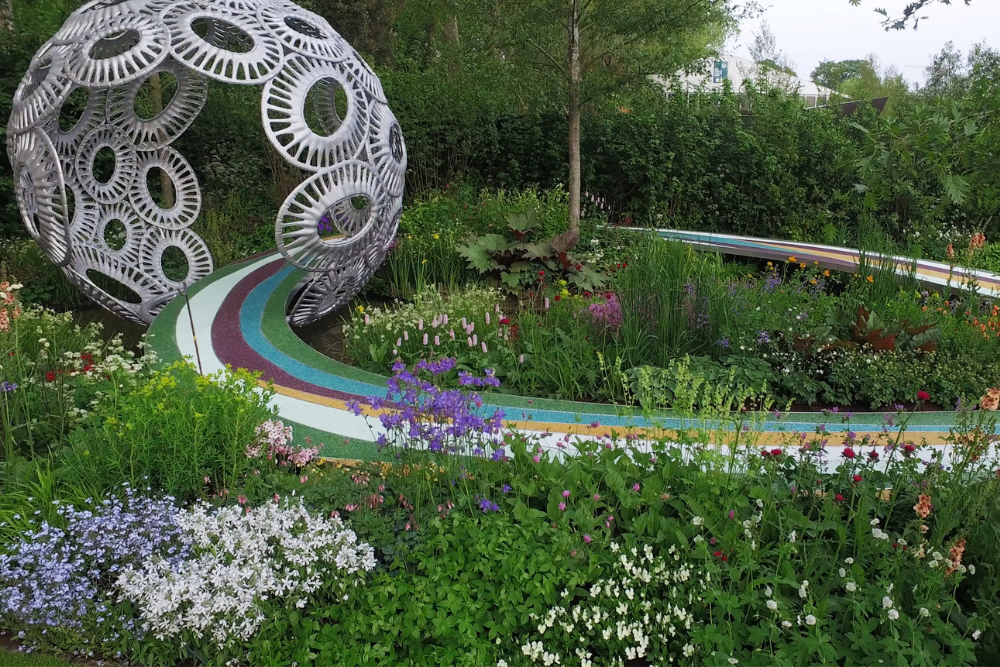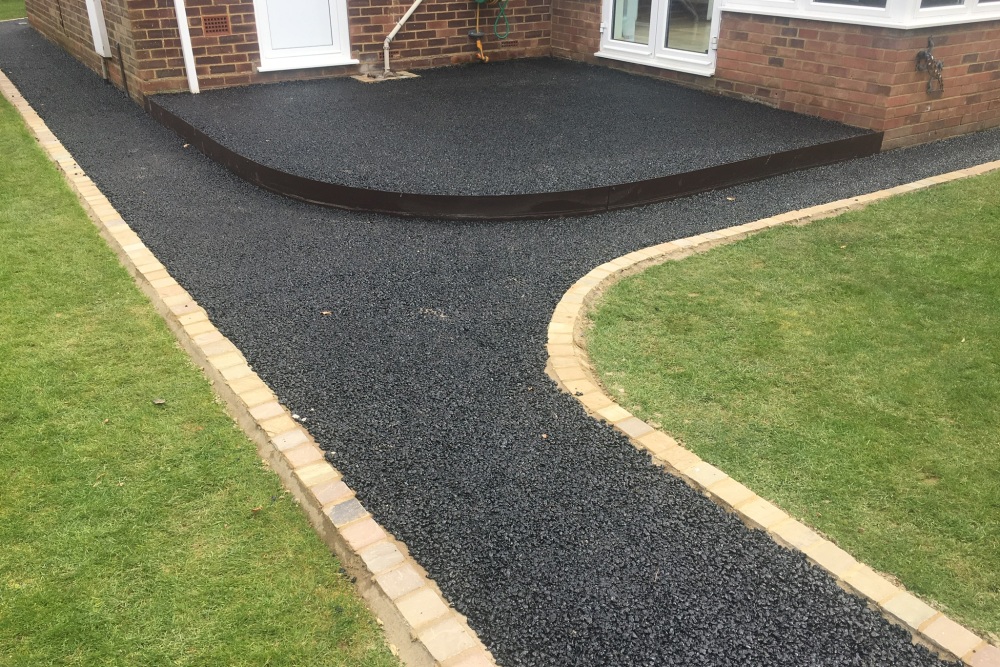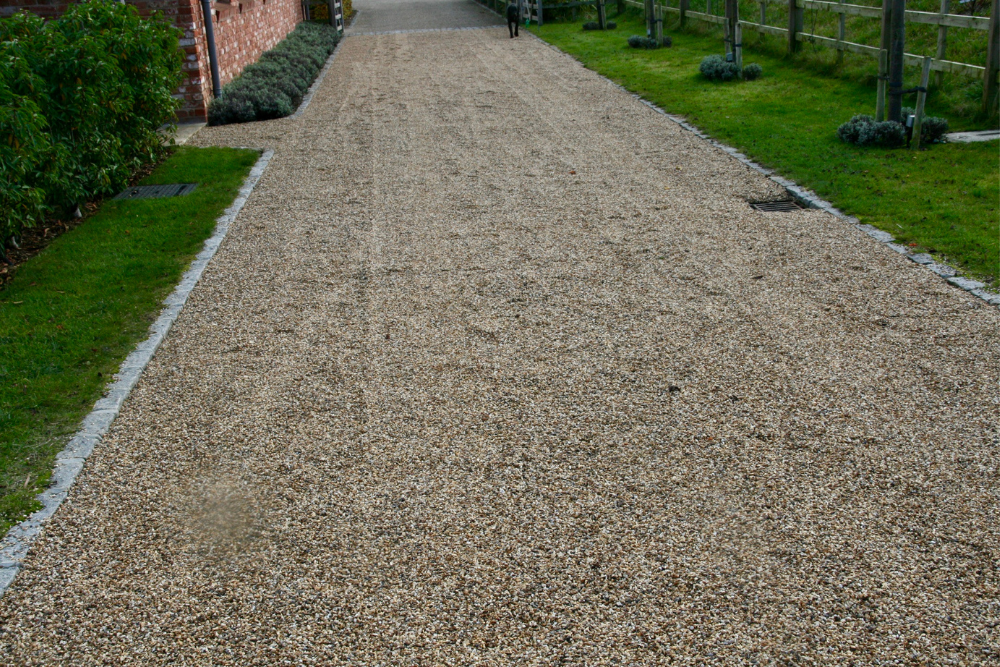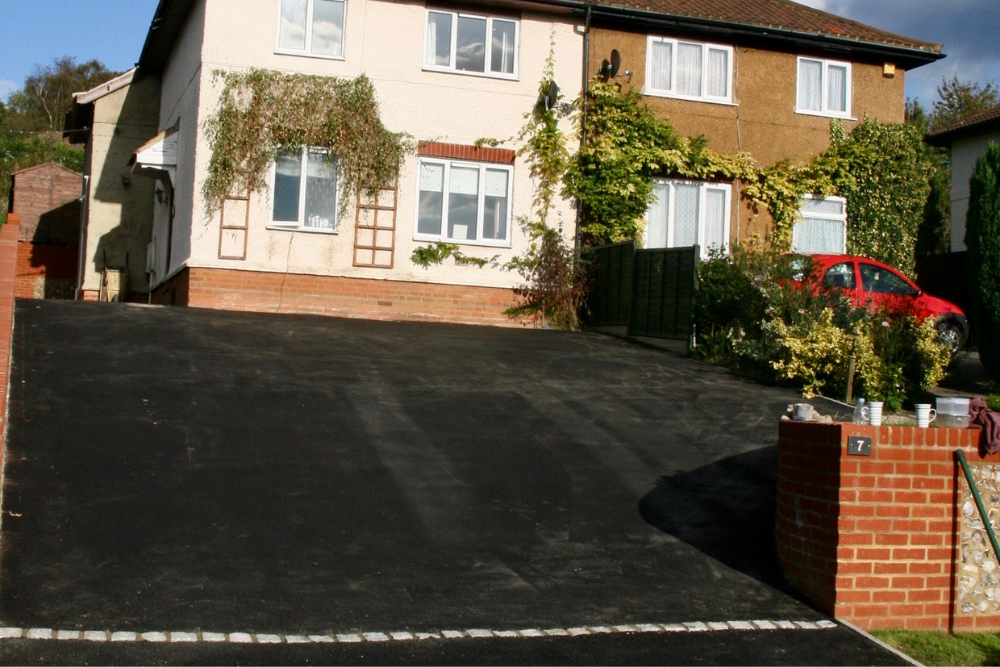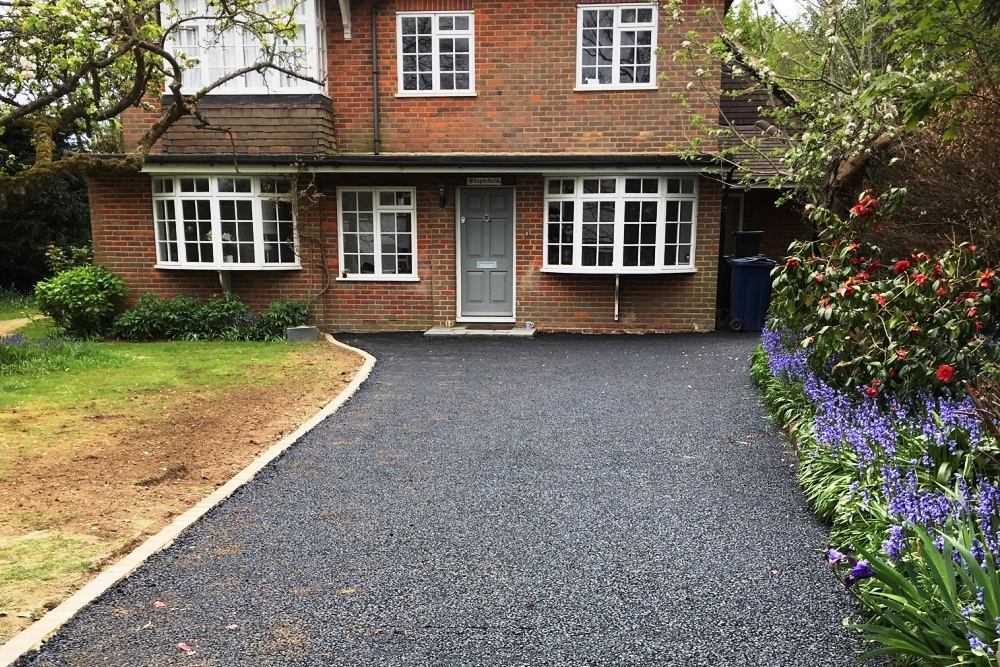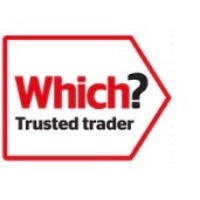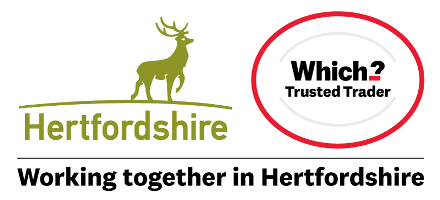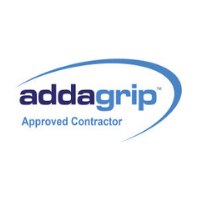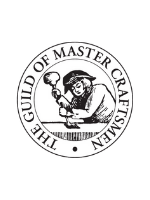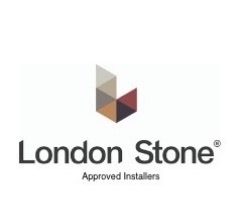For a free, no obligation quote call 0800 085 4299
Tarmac
Short for Tarmacadam, tarmac is a road surfacing material made by combining macadam surfaces, tar and sand. It was invented by Scottish engineer John Loudon McAdam in around 1820 and patented by Welsh inventor Edgar Purnell Hooley in 1902.
Nowadays the use of bituminous macadam, or bitmac, is common and there are many different types and grades of products each with slightly different properties depending on the required surface use.
Tarmac can provide a cost-effective surface for larger driveway areas, especially those subject to heavy traffic. It provides a flat surface but with enough grip in most weather conditions and is very hardwearing and durable. It is often machine laid, if the conditions are suitable, so can be more costly for smaller areas. It does have a rather industrial feel to it so we rarely recommend it for domestic driveway areas unless there are specific requirements for its use.
Coloured tarmac products are available, most commonly in red, green and blue. However, the colours may not be stable and may vary in actual appearance from representative pictures or samples. The coloured tarmacs are much more expensive than the standard black.
We also install macadam for vehicle crossovers and driveway entrance skirts, as well as wearing course areas for car parks, access roads and some driveways.
We frequently install porous macadam as a base for our SUDs compliant resin bound surfacing, which allows the surface water to drain back to the ground source and provides a cost-effective substrate for the larger domestic driveway. This is generally preferable to concrete as it is less prone to cracking and does not require so many construction joints. It can also be used as a surface for rolled shingle or tar and chip, giving a more attractive finish than straight tarmac.



